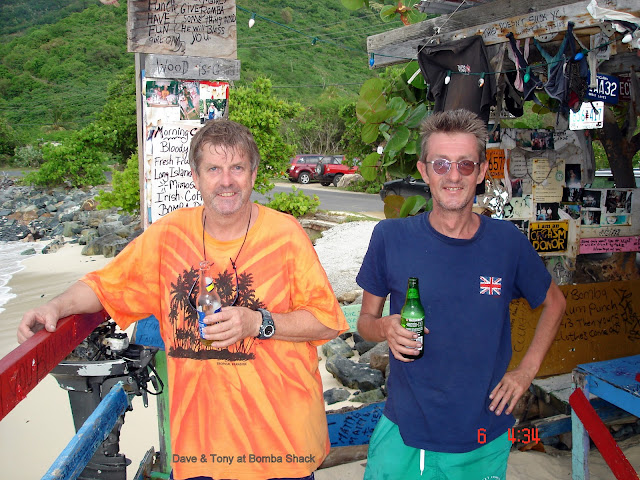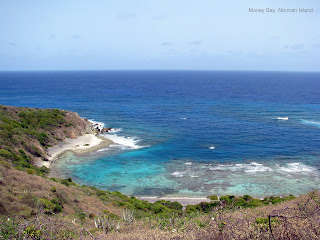 |
| Refuelling before leaving St Martin |
Work Completed Underway: Part 3
It was now early August and we needed to leave the relative safety of St Martin and the Lagoon. In our early days (read inexperience) we did not really take the weather into account. A rough crossing to Antigua became apparent (large seas on the nose) and forced us to rest at St Barts for the remainder of our day. Just before nightfall, while we still had visibility, we took advantage of calmer seas and headed off. After a pleasant stay in Antigua (and no sign of our rudder) we moved on to Guadeloupe getting as far as the Isle de Saintes before heading across to Pointe-a-Petre, a secure mooring and an airport (with customs office) to take delivery of our rudder.
Self Steering Rudder. Taking delivery of our self steering rudder from the customs office at the airport in Pointe-a-Petre meant having to use a taxi. Getting out there was easy but getting back to the dockyards near where we were anchored was not! I made the mistake of getting into the taxi before agreeing on a price for the taxi fare. The driver just took off at a great rate of knots and then tried to rip me off by demanding I pay an outrageous fare. I asked him, rather enthusiastically, to stop and let me out but he just kept on driving like a maniac. I directed him to the Port Captain’s Office where I rushed out (with my rudder) and sort refuge therein. One of the staff stepped in and sorted things out for me so that I did not have to pay the ridiculous amount demanded by my ‘kidnapper’. They were nice staff at this office and also allowed us to refill our water tanks before eventually departing.
 |
| Thru wind & rain.... |
Generator. Our generator has been well mannered since first using it in 2008. However, we needed to have a leaking/damaged rubber elbow and also some rather large fuses (which started to blow) replaced with circuit breakers. No generator meant no fridge and no food! Replacement was undertaken by a French electrician in Pointe-a-Petre (Waypoint) and we can’t recommend them highly enough. They are a major electrical shop at the yacht docks. After diagnosing our generator’s problem he then directed us to a supplier (on the other side of the city) and loaned us his car to go and get the required circuit breakers. Our first experience of driving among the Frenchies turned out okay and we returned his car undamaged an hour or so later, now with full fuel and with said parts, which he duly installed. Everything worked perfectly so what can one say. It is this sort of experience that makes the cruising life so enjoyable and restores the occasional loss of faith in some marine technicians/businesses.
 |
| Port of Pointe-a-Petre |
 |
| Our first Caribbean fish (inedible) |
While I'm making general comments, I'd like to point out how thoroughly the French take their maritime security. We were boarded in St Barts, questioned in Isles des Saintes and watched in Martinique. It was not intrusive and we welcomed their presence and efforts to make anchorages safer.
(We also think they wondered about our flag and strange accent! Go you good thing!)






















